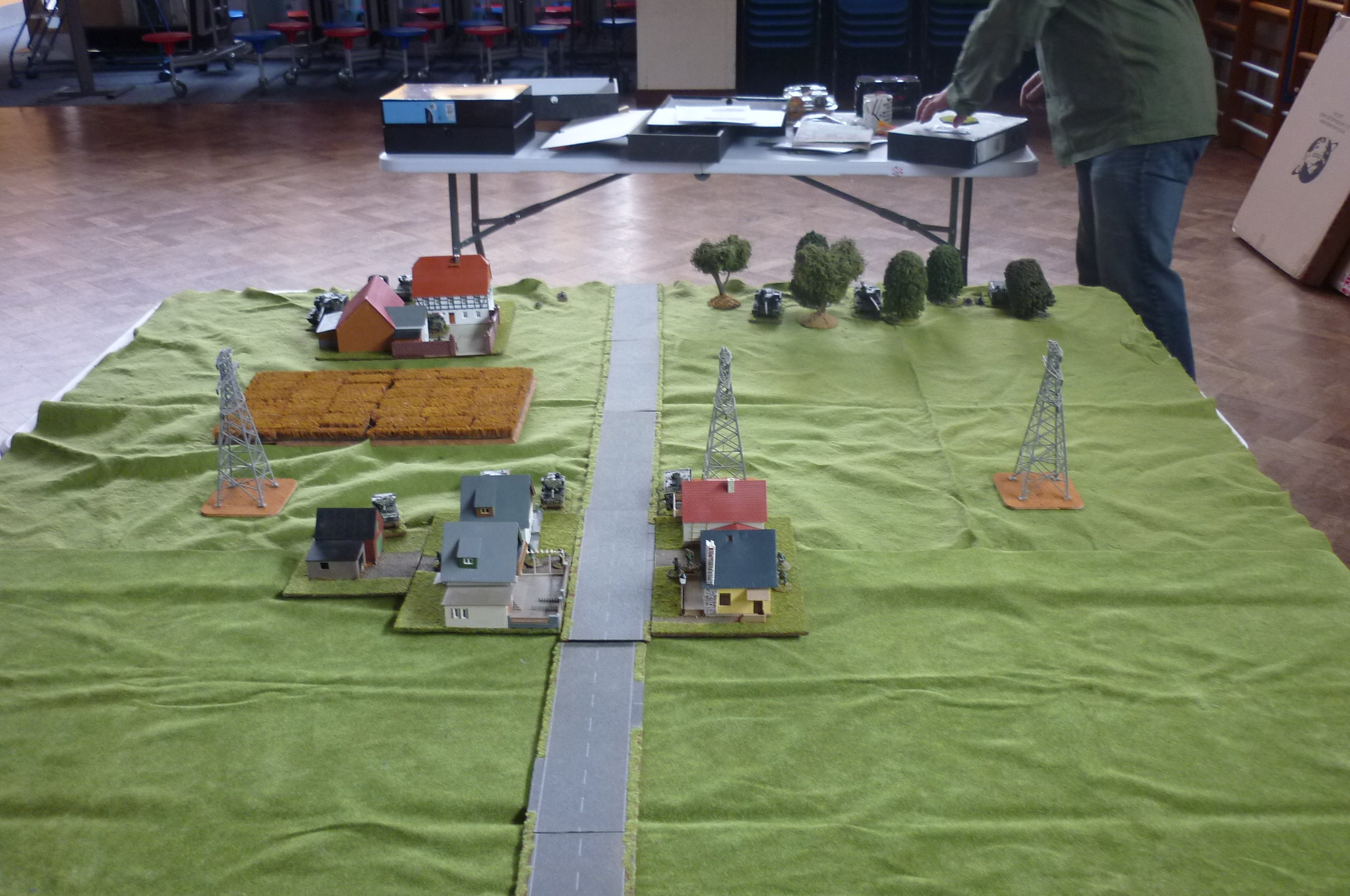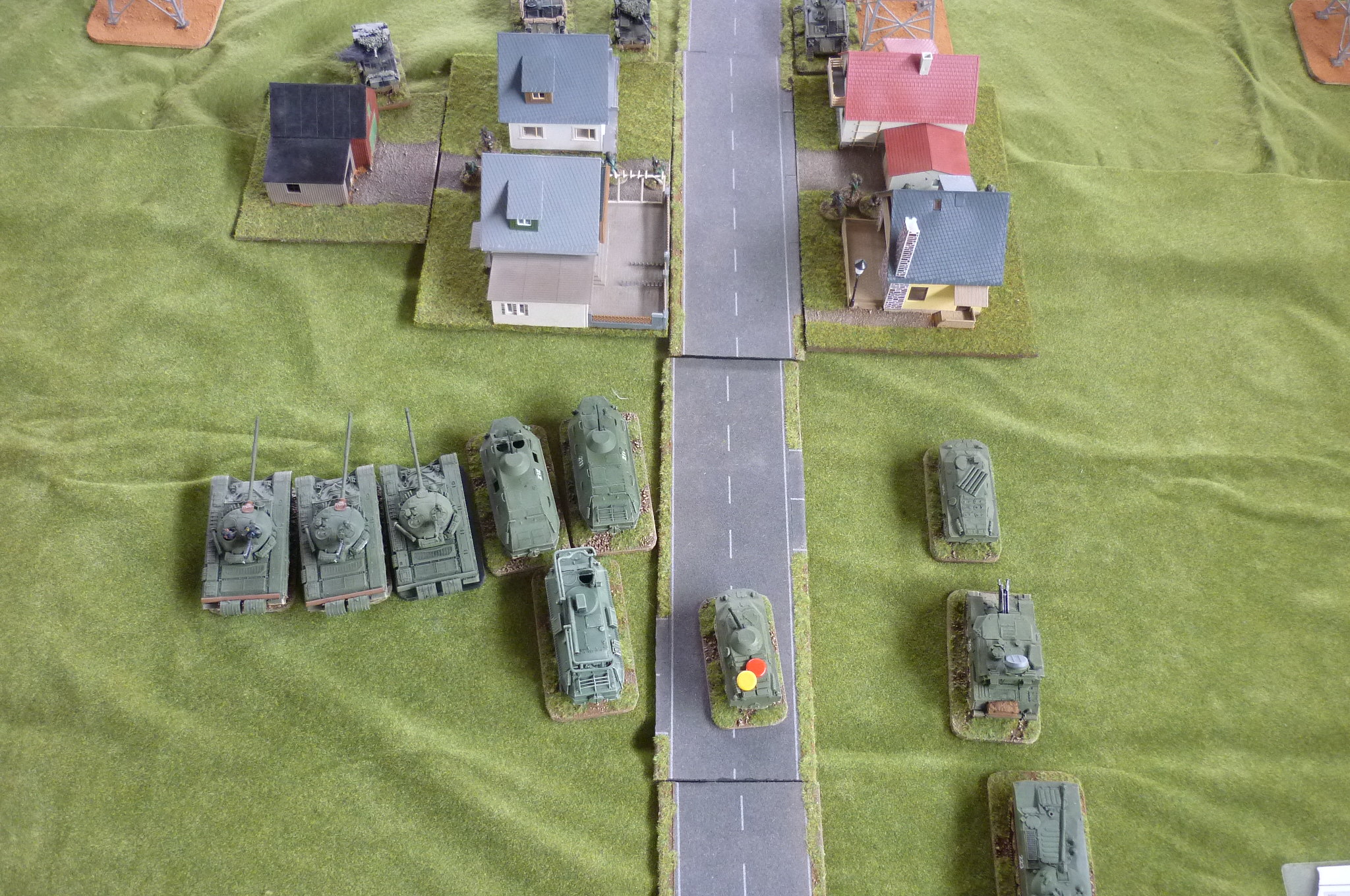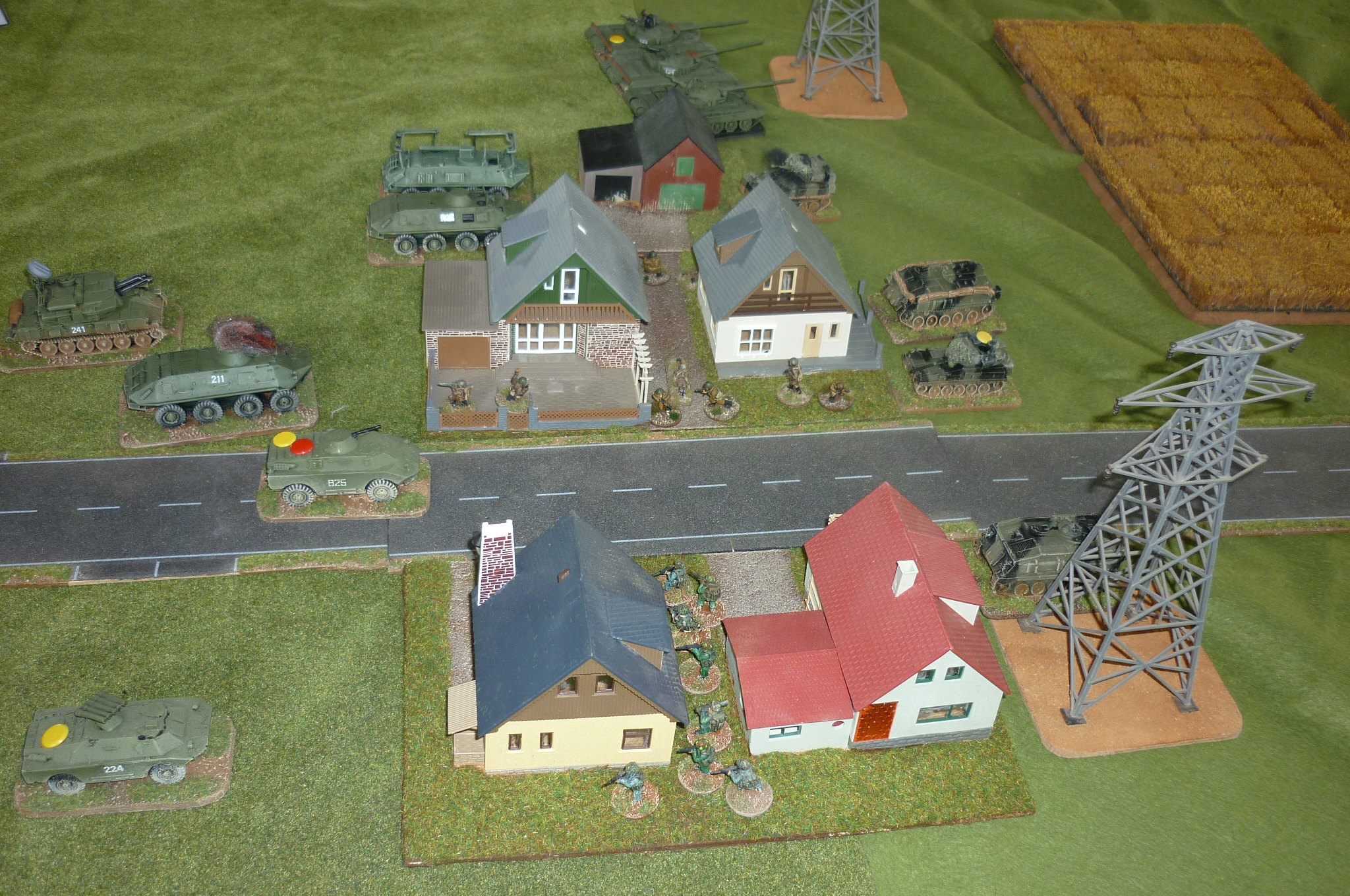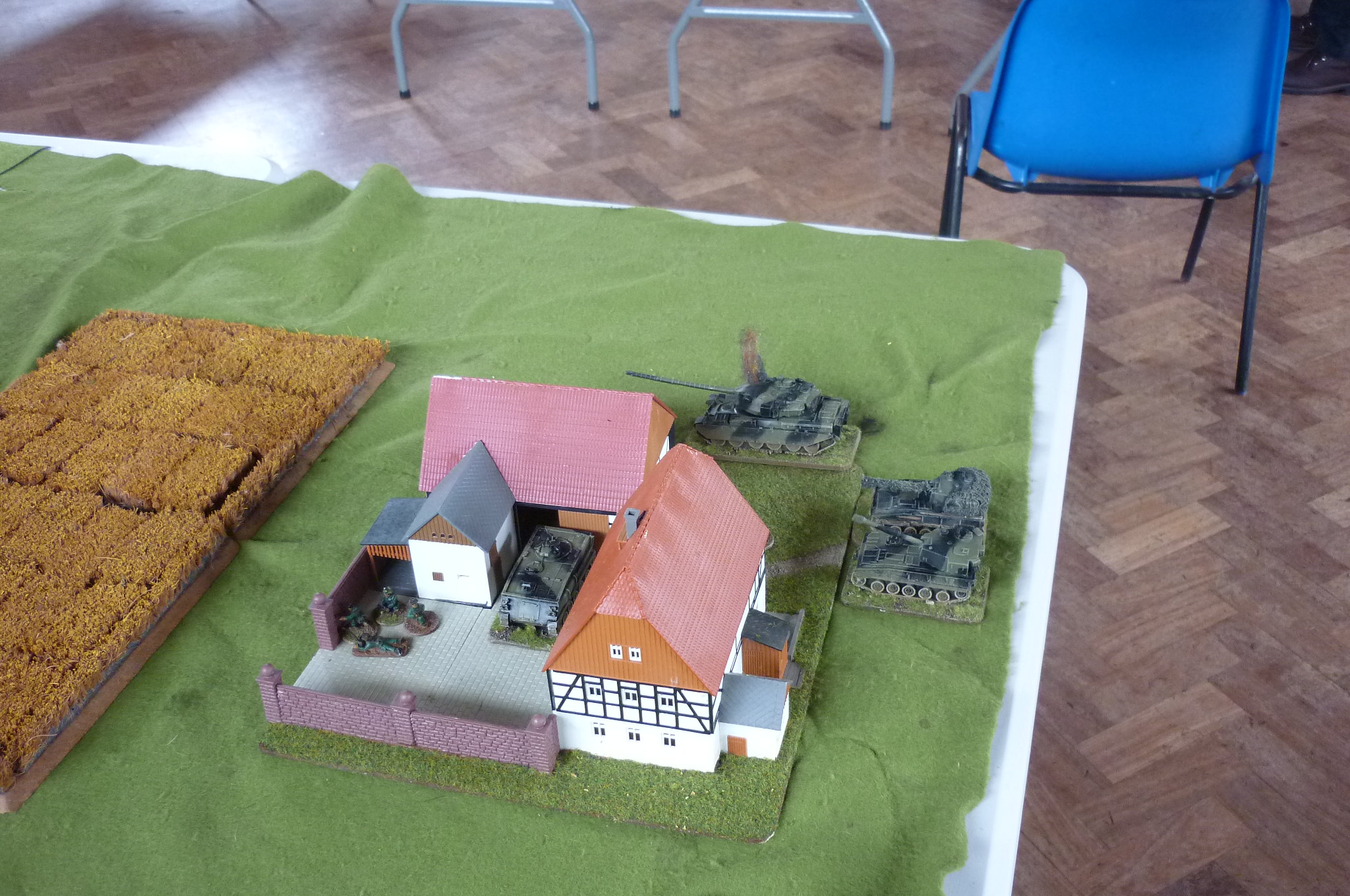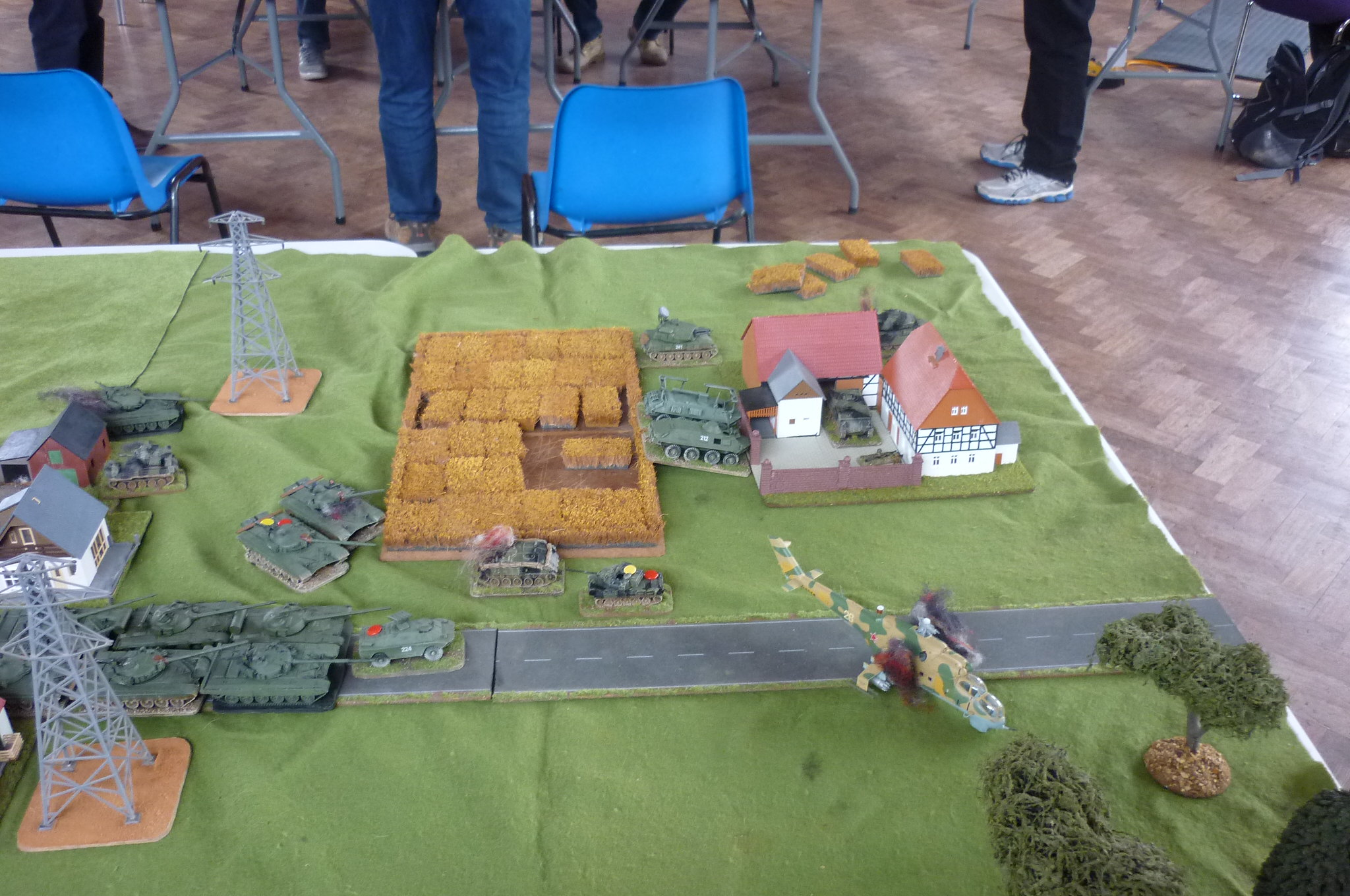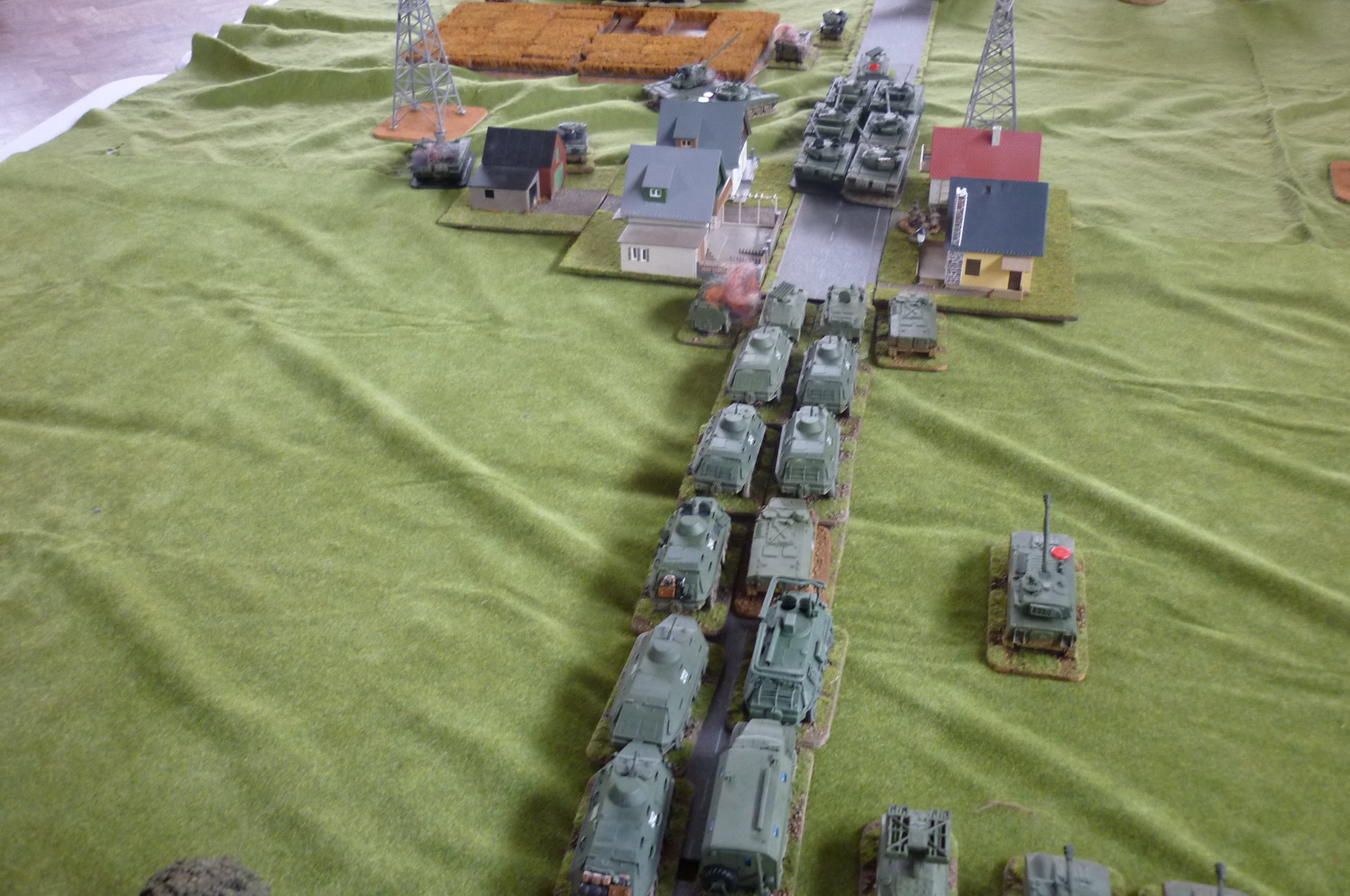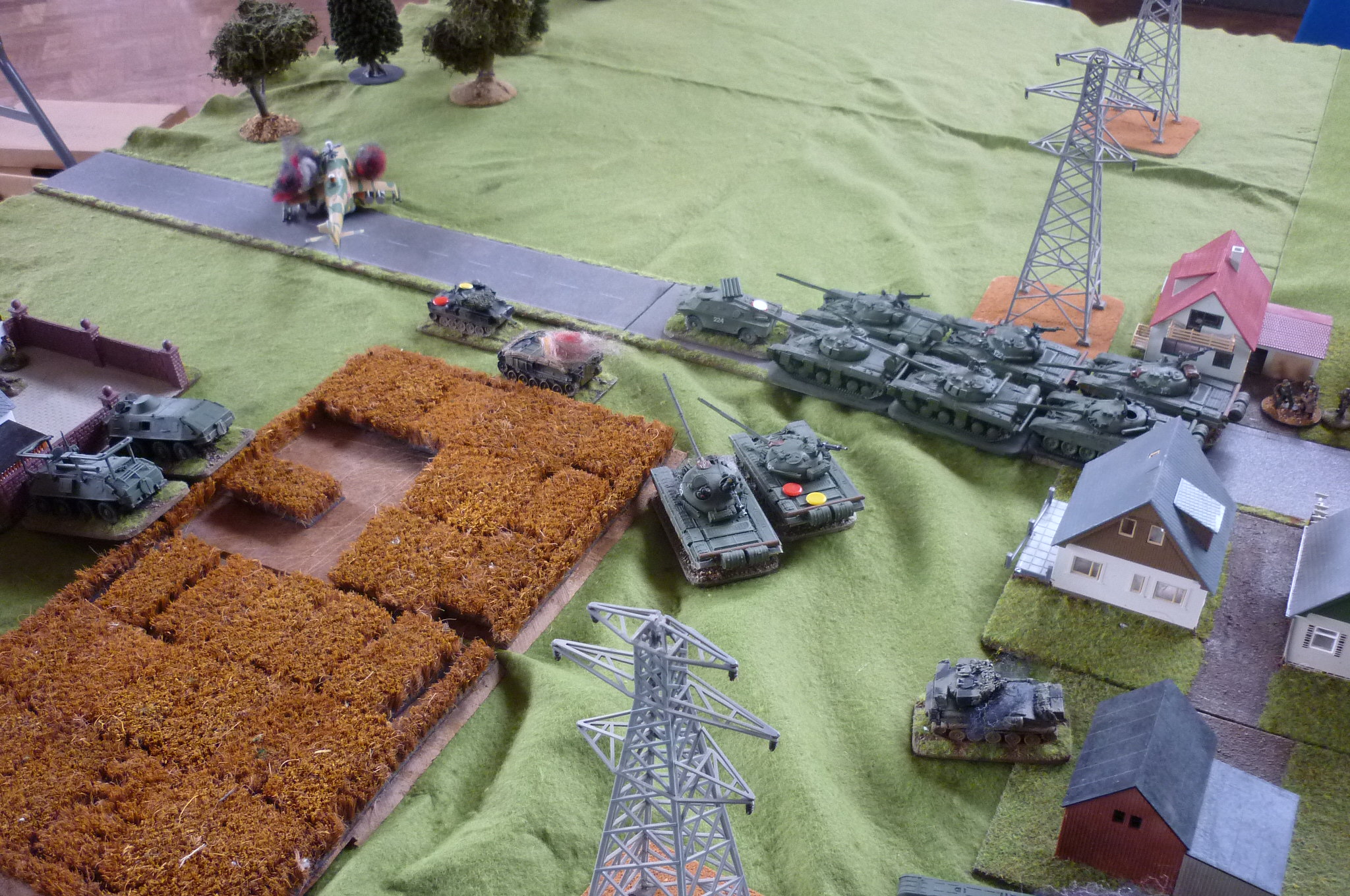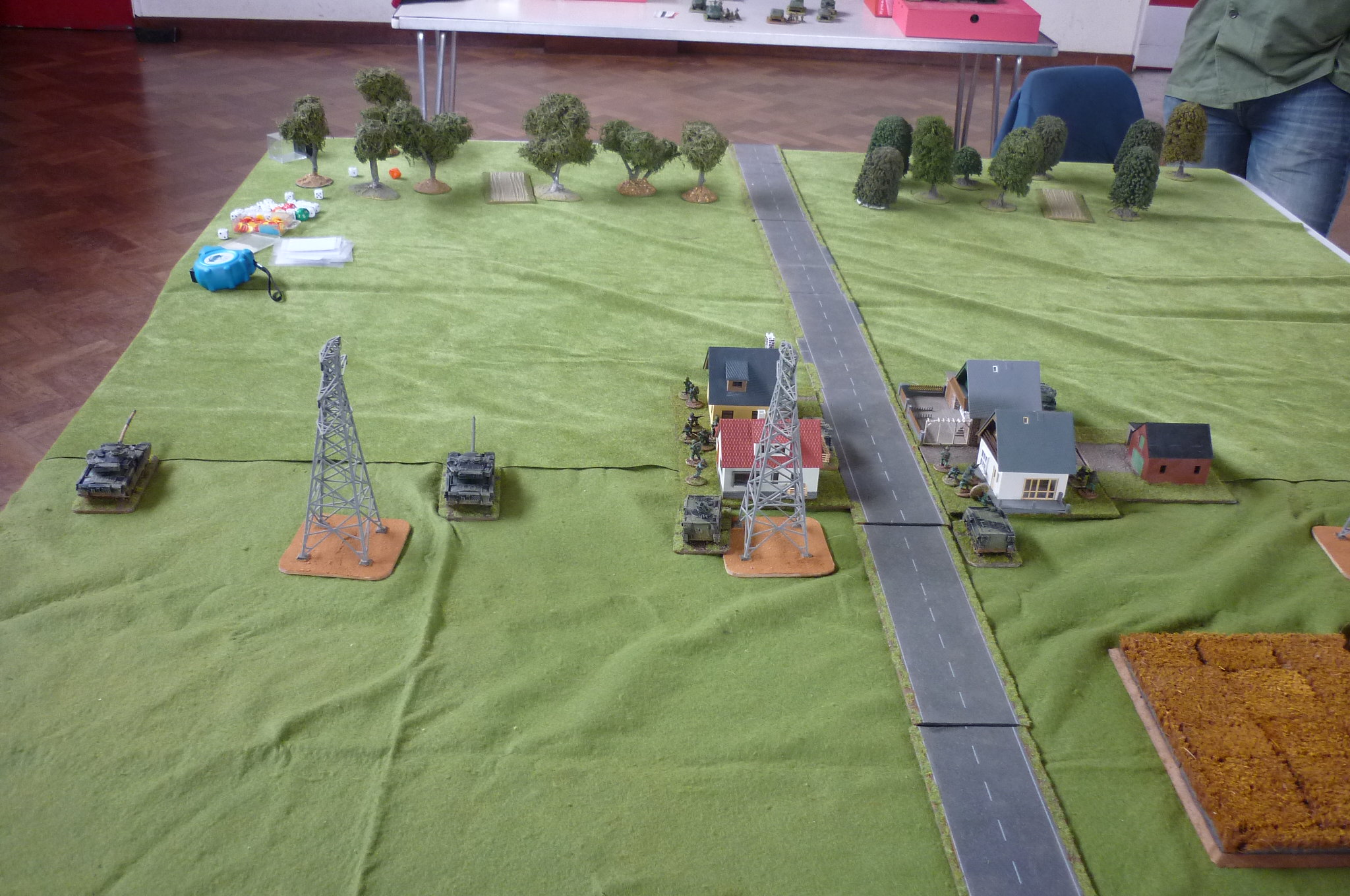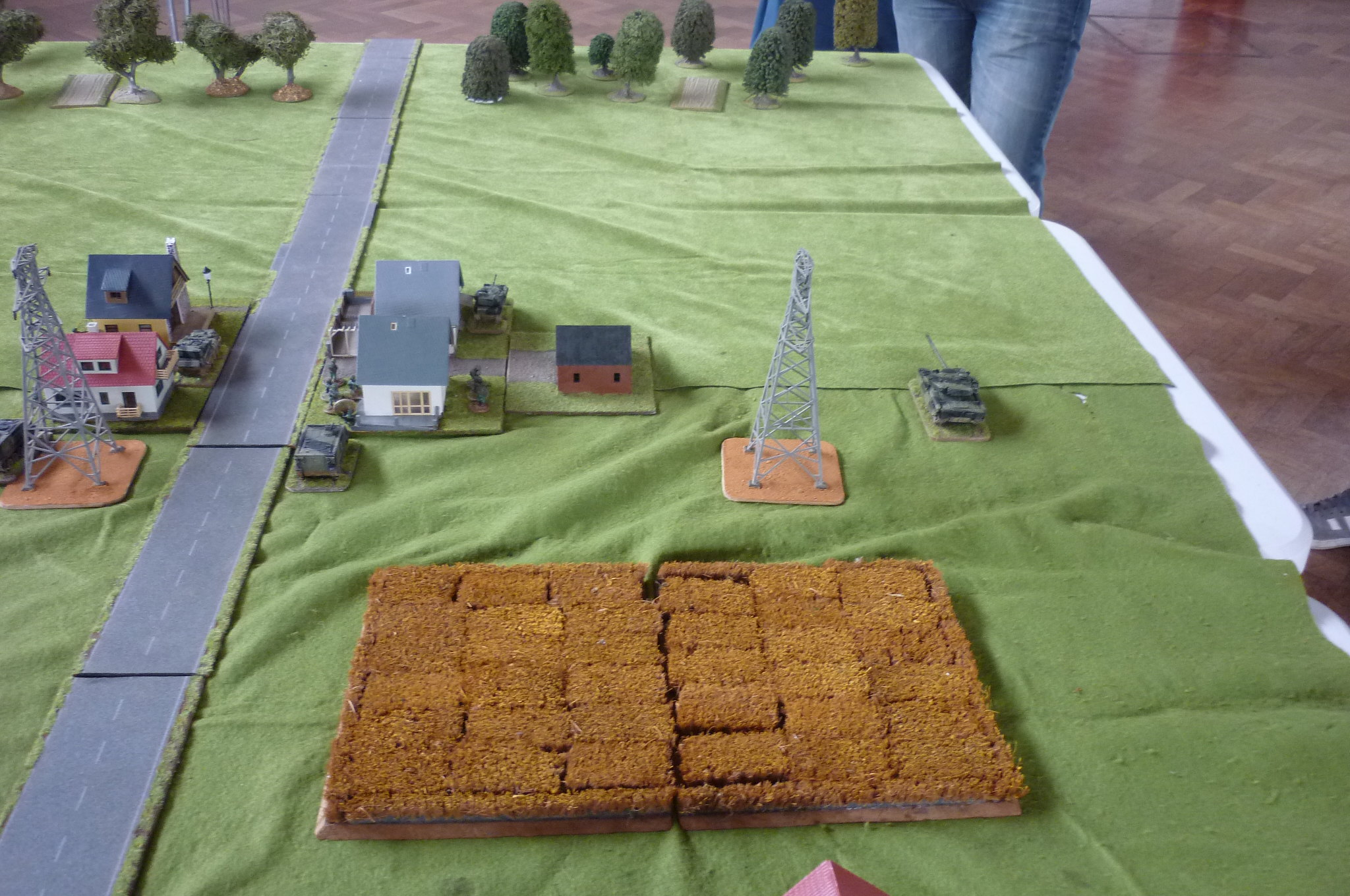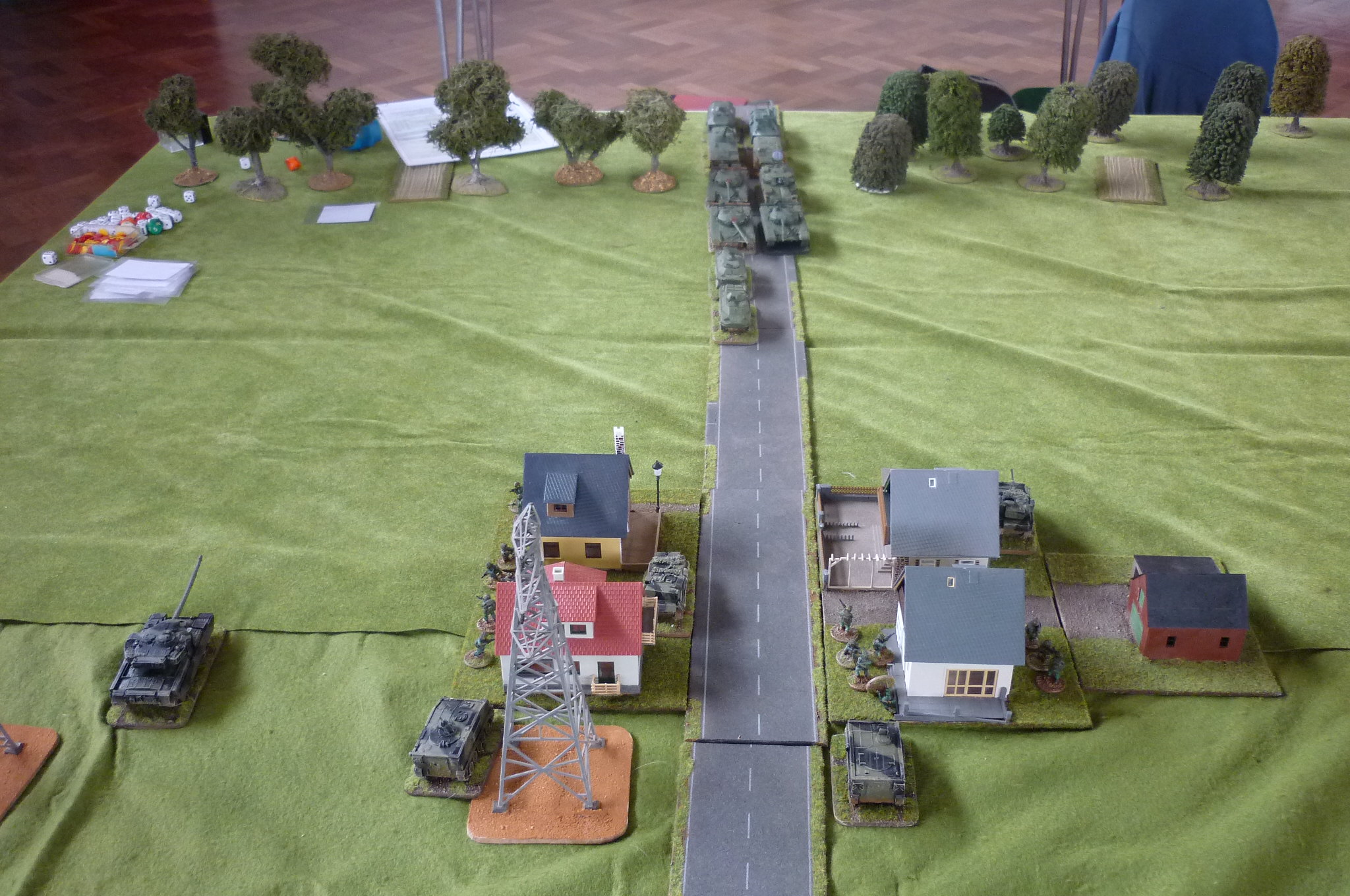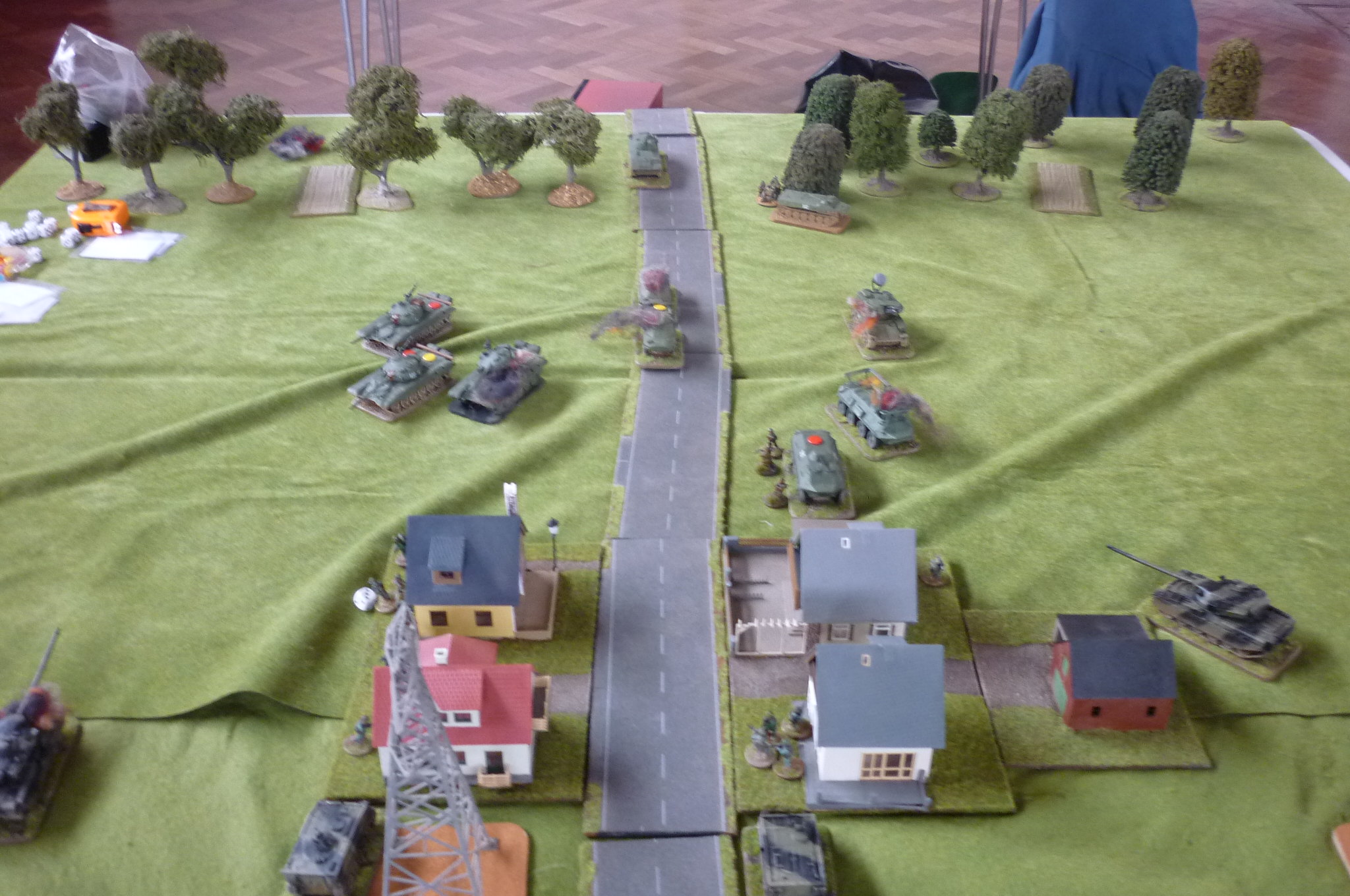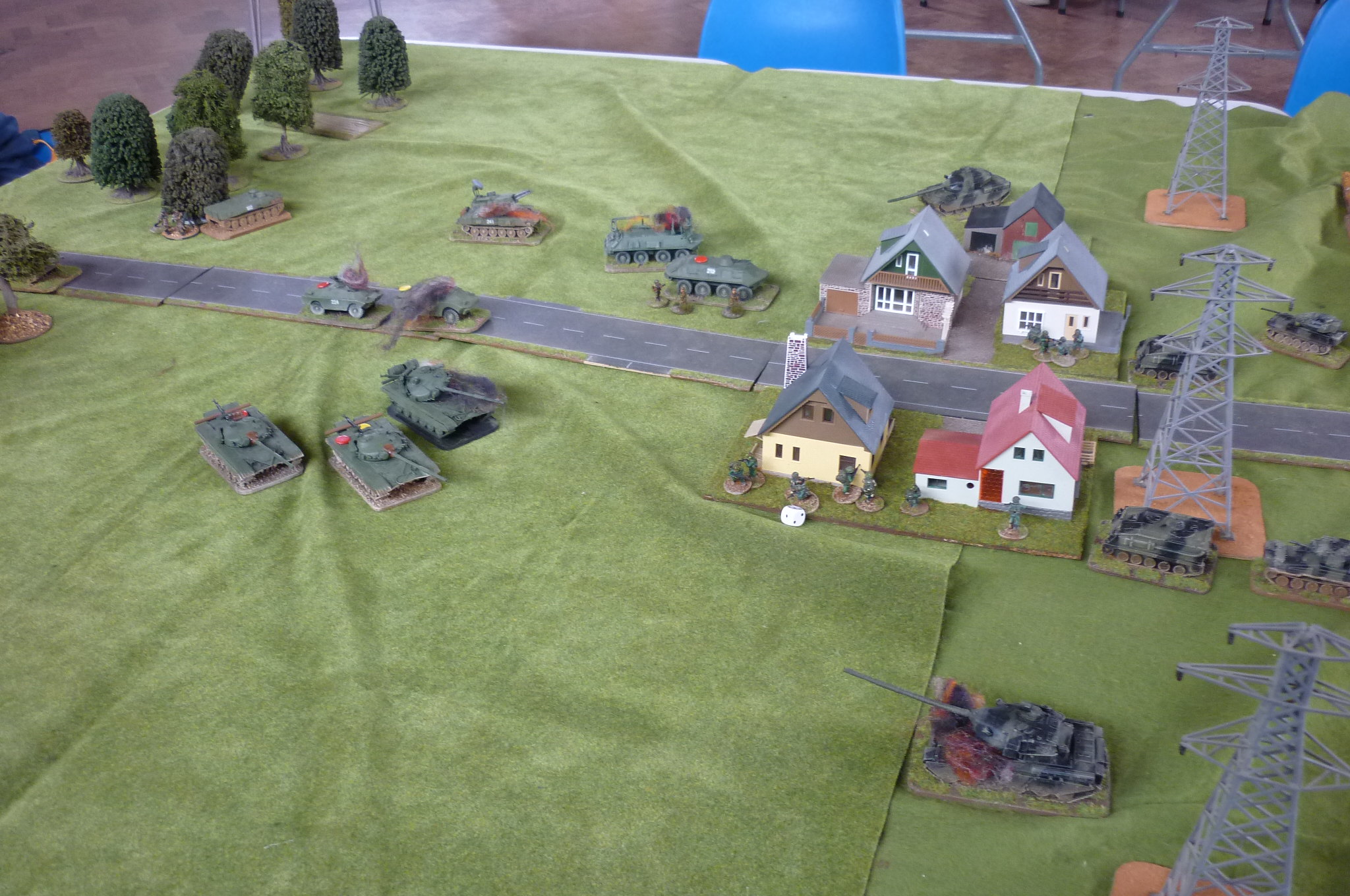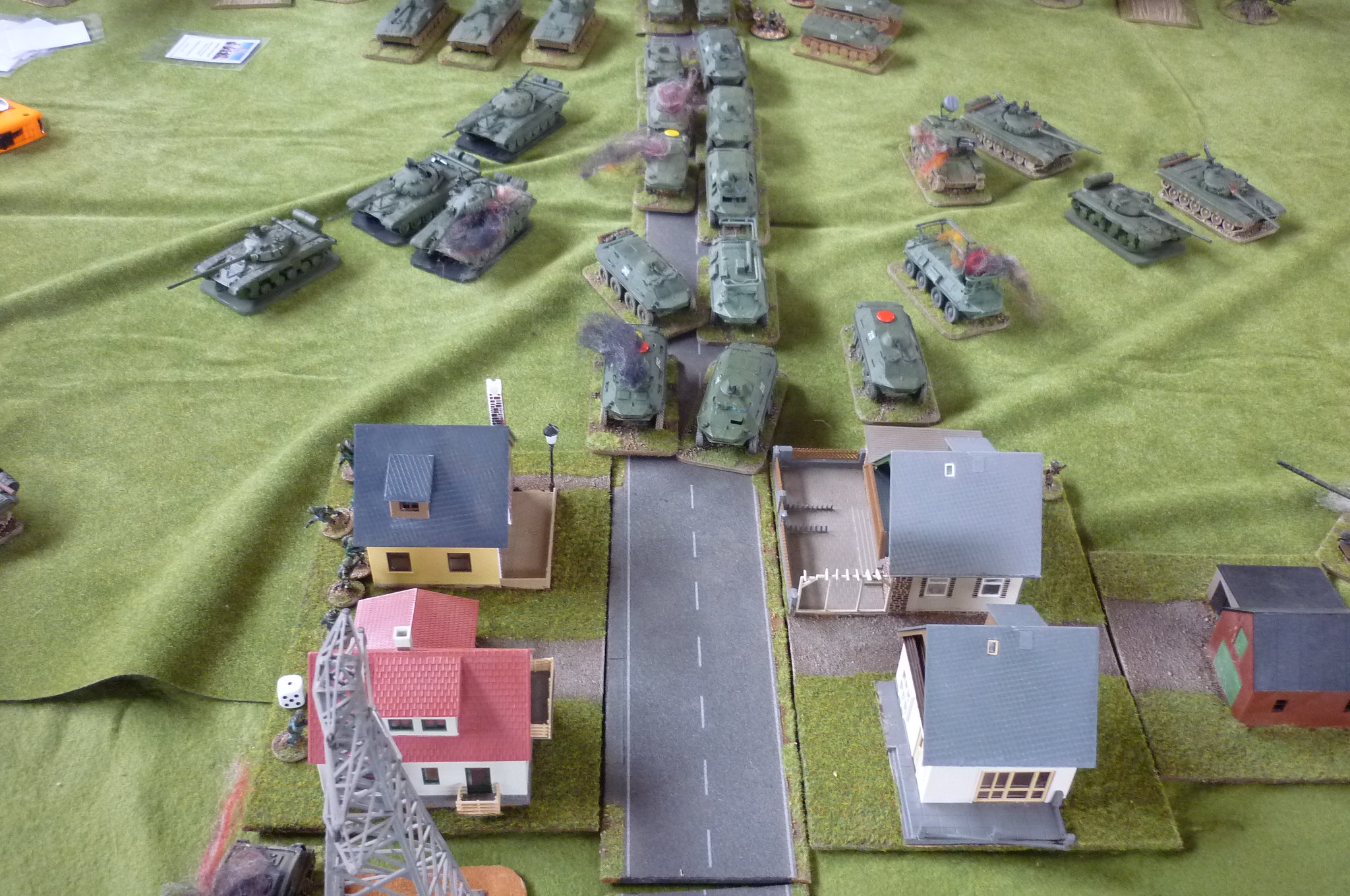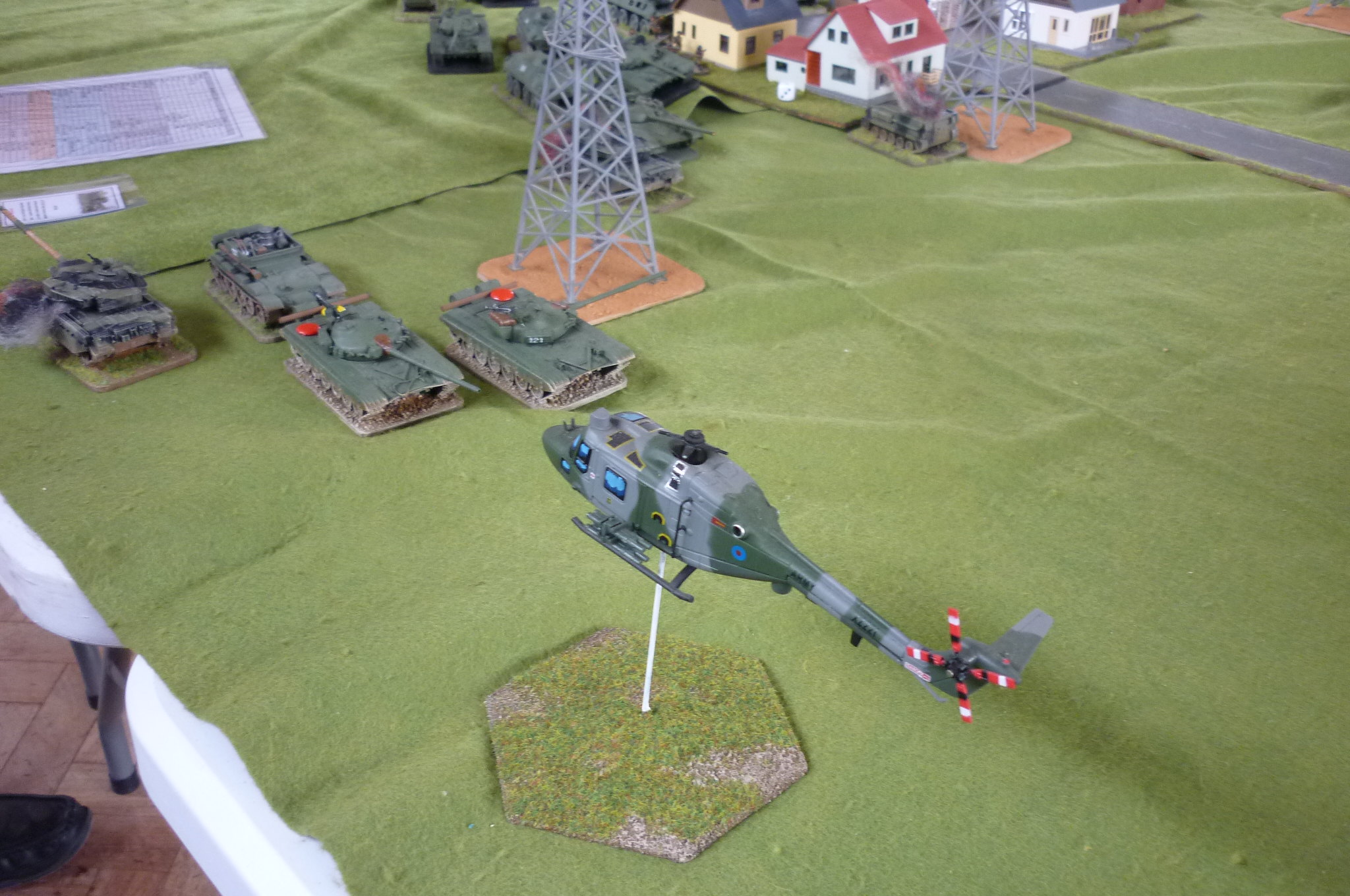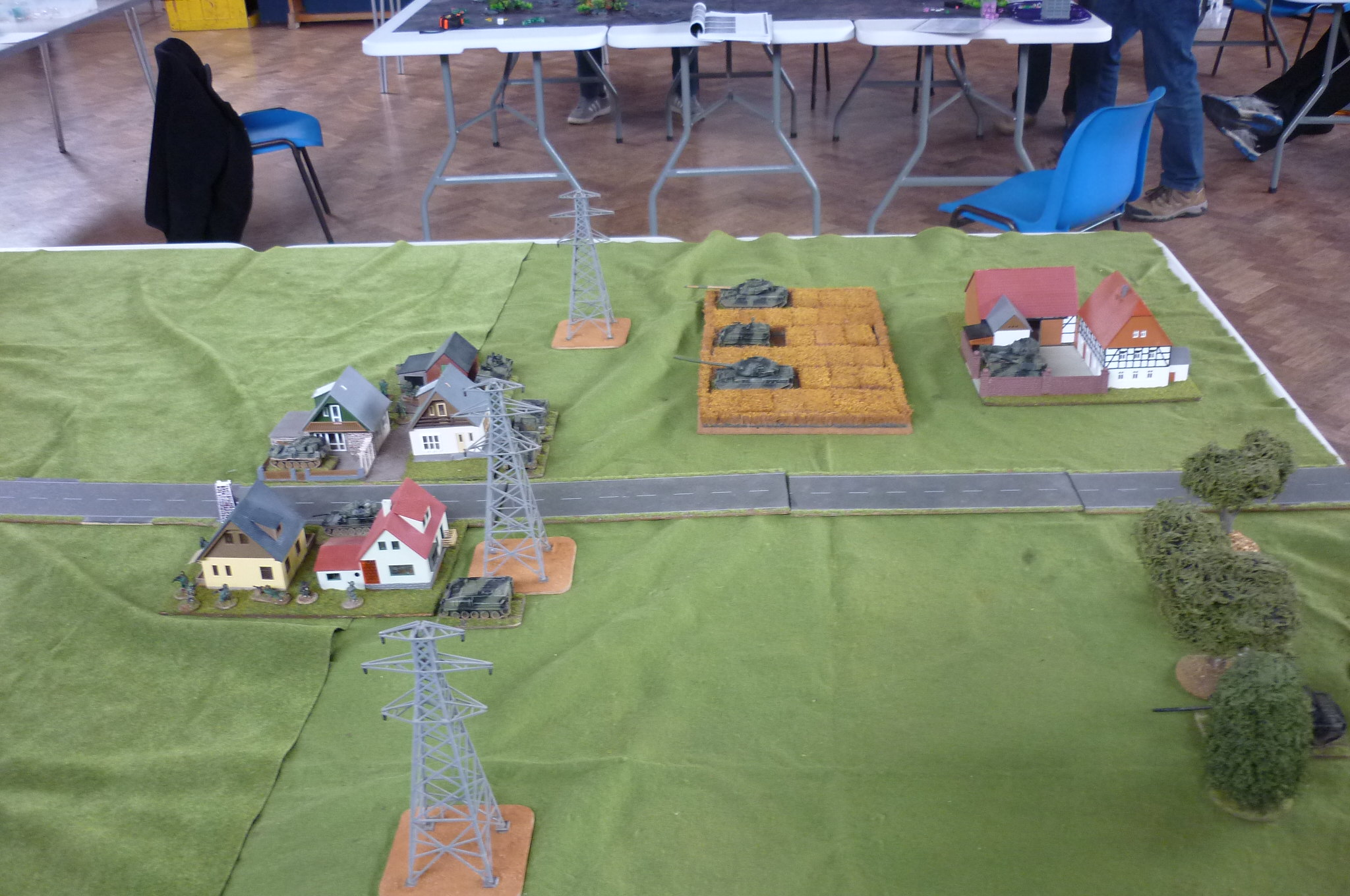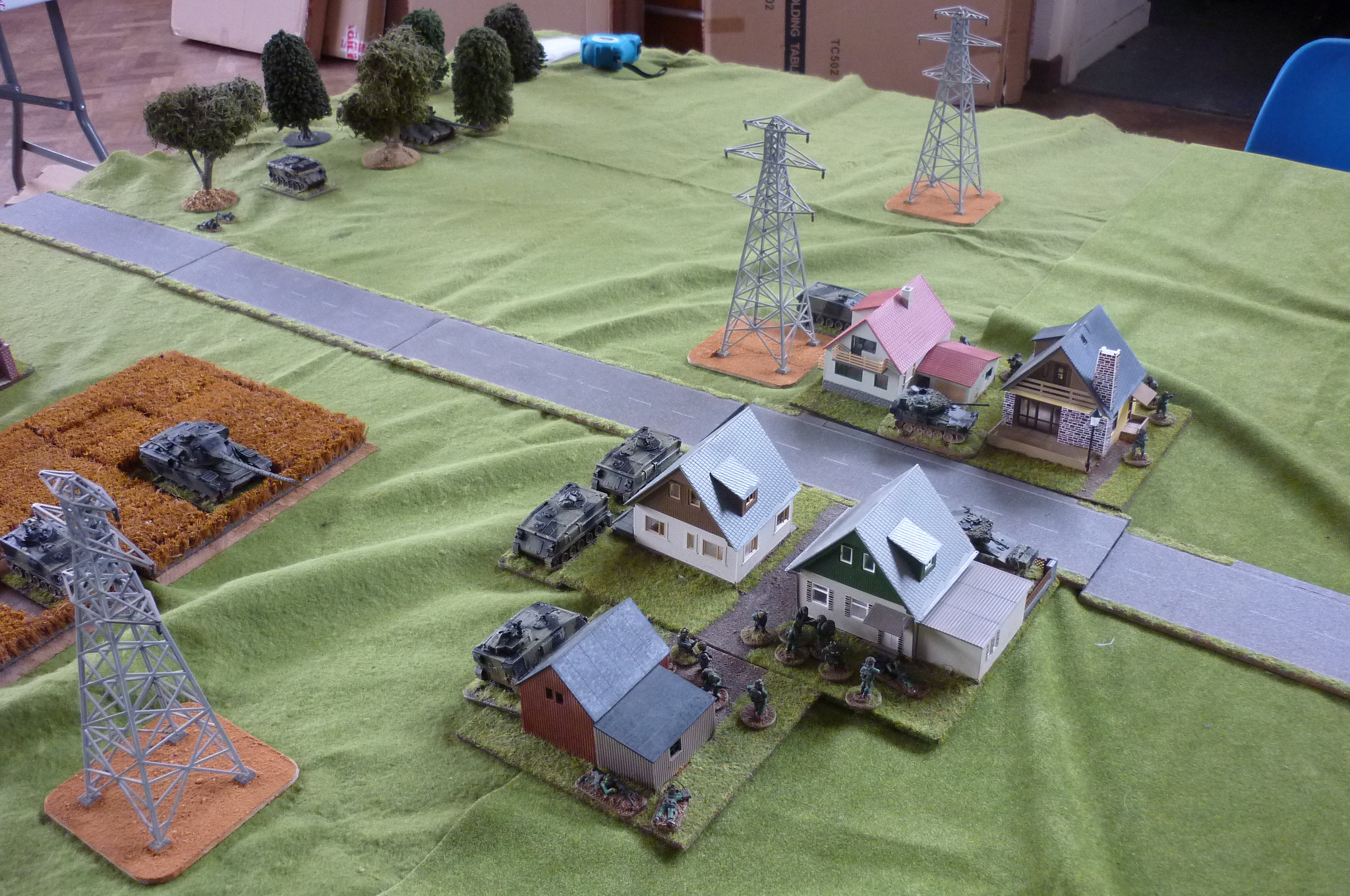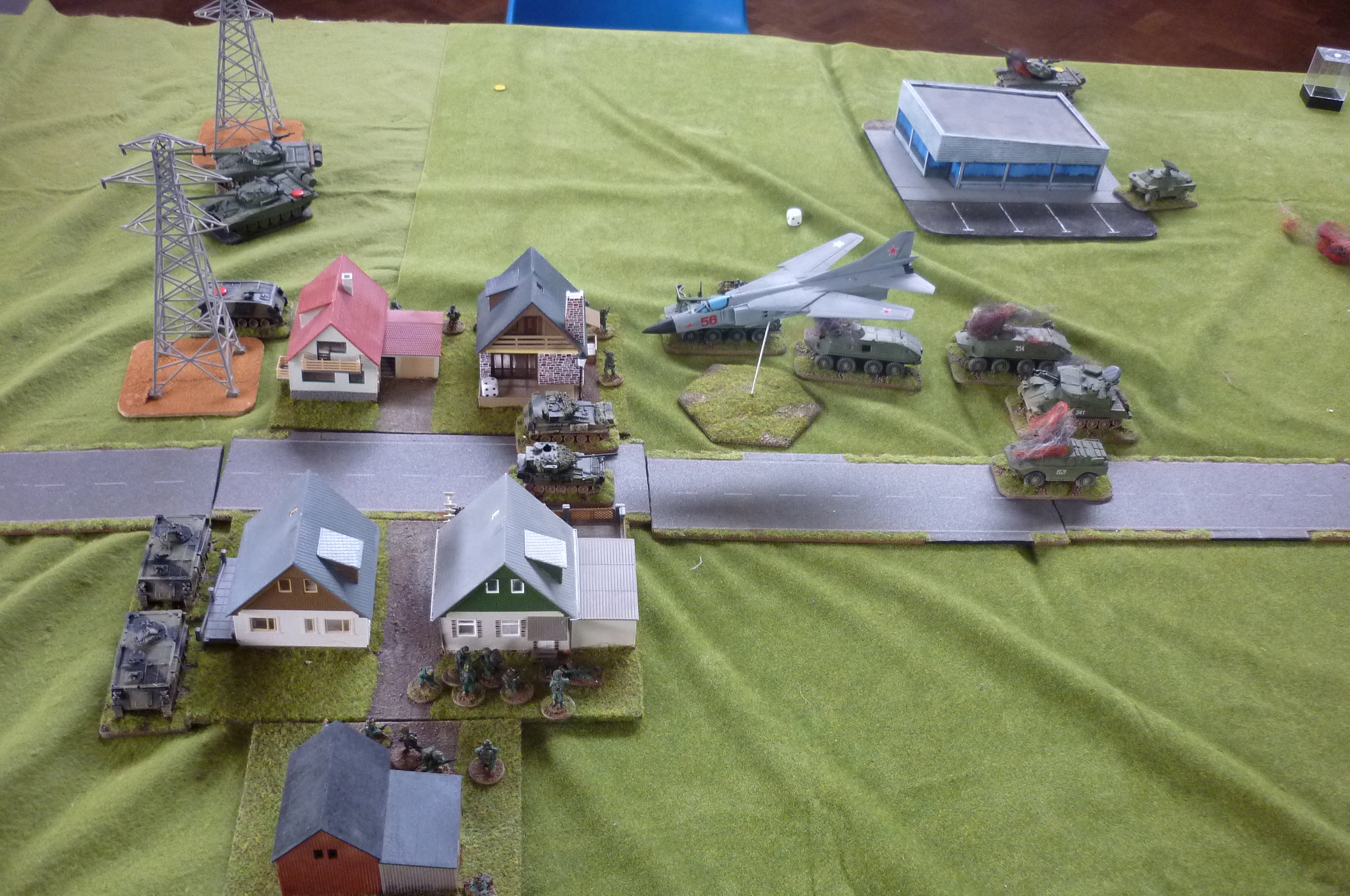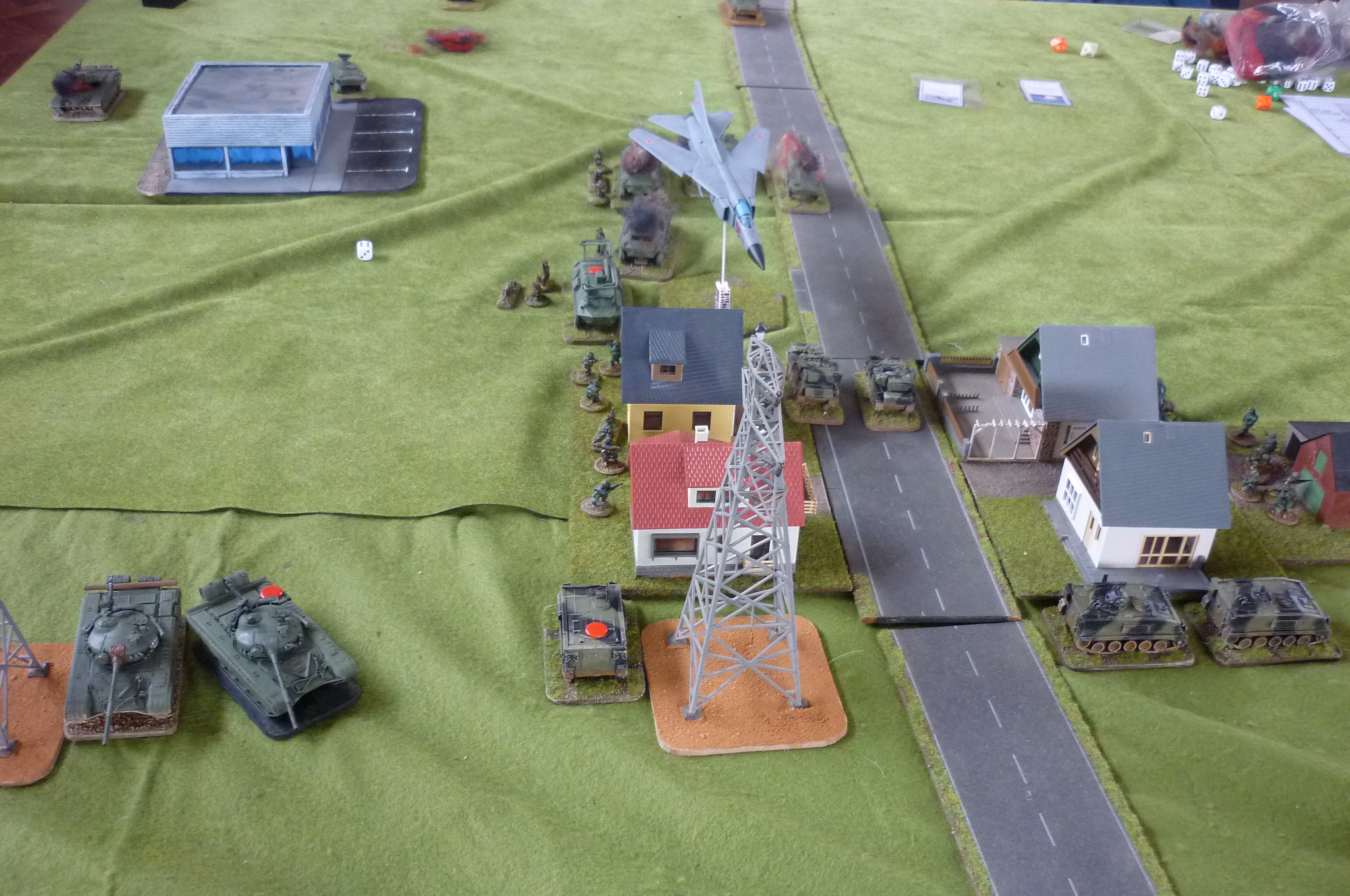64 point BLUE on BLUE Training EX
by Dan McLean
Warsaw Pact Forces
Armoured Calvary Troop
HQ Call Sign RED HAT
IPM1 PL (4) RED HAT 11
4 M113 Scout Sections RED HAT 21, 31, 41, and 51
Heuy rifle pl (+ GPMG) CRAWLER 31
Cobra Flight (2) SIX SHOOTER
VADS PL (2) SHIELD 71
NATO FORCES
M60 Cbt Tm
HQ Tank Call Sign BLUEHAT
2 x M60 Pl (4 tks each)
M113 PL
M06 Mortar Pl
HQ (2) CALLSIGN SABRE
3 x full scout sections (4 vehicles each)
1 x section minus (3)
HMMWV AA PL (4)
VADS PL (2)
The combat team commander opened his mission package. He
knew the WP Forces were preparing to push into Germany, the bigger heads kept
saying it was just sabre rattling, but he remember the shear amount of NATO
forces, Americans, Brits, Canadians and Germans he had seen the two weeks he
had been in country made him unsure that this was bluster. His unit was new to
Germany and the the Brigade Commander wanted to prove to the Division Commander
that the newly arrived forces were prepared to meet any threat. The OPFOR for
this activity were experienced Patton tankers and Cavalrymen.
As he flipped through the package he read a quick
introduction letter from the Div Comd, which explained this was a force on
force EX that would confirm the commander’s ability to engage the WP forces.
The letter also confirmed that the casualties would be assessed through the use
of MILES gear and umpires (callsign WHITE KNIGHT). This would be a timed event
with an ENDEX at 1830H.
The first sheet he saw was the overlay for the map. He was
given an Area of Operation of about 6 km wide and 4 km deep. It was sparse
terrain with few hills and scattered farmhouses. There were two key terrain
features. These were a large Gothic Church that dominated the area and a MSR
that bisected his AO west – east. This was known as MSR RHINO.
He was directed to assault from the south and clear either
OBJ KIWI to the west or OBJ PATRICIA to the east.
REDHAT conducted a combat estimate and decided to push
towards OBJ KIWI. He was a little upset that the brigade commander kept some of
his forces in reserve, but he thought the tank platoon and scouts would be
sufficient for the thrust. He decided to leave the rifle platoon airborne for
flexibility.
He issued radio orders to his platoons and awaited HHOUR.
REDHAT 11 held on as his tank followed the scout section to
the line of departure. The scouts had done a good job and had gotten
significantly closer than expected. He had received his radio orders and knew
his four tanks were the core of the combat strength of the unit. He was
concerned with this but thought his boys would be able to handle it. He was
excited to have been given a platoon of the new Abrams, cutting edge of the
army, especially as a first platoon command.
As he pulled into his position his radio crackled.
“REDHAT 11 This is RED HAT 13 Contact, WAIT OUT”
“REDHAT 13 4 M60 400 metres north of RHINO concealed in
wheat field. Preparing to engage.”
The young Lt then keyed the mike
“All REDHAT 11 victors prepare to engage 13 target Pattons upon
Order.”
REDHAT watched the seconds tick down and as HHOUR hit heard
the boom of the M1 cannons. He knew his units were now engaged and hoped his
plan was sound, as a message from one of the scout sections came though his
headset
“REDHAT REDHAT this is REDHAT 41 i have engaged and
destroyed CALLSIGN SABRE.”
This brought a cheer from the Company First sergeant. It is
always good to take out an enemy commander early in a fight.
In his other ear he heard the FAC talking to his supporting
Cobras.
“REDHAT this is SIXSHOOTER LEAD I have good view of OBJ
PATRICIA ——Break——i tally one i say again ONE vehicle within 2 KM of
objective.”
“SIXSHOOTER LEAD this is REDHAT ACTUAL destroy that vehicle
in preparation for an air assault. CRAWLER 31, REDHAT FREZENBERG i say again
FREZENBERG” (using the code word to drop right on OBJ PATRICIA.)
“CRAWLER 31 ACK FREZENBERG.”
“SIXSHOOTER LEAD roger rolling in hot on OBJ PATRICIA” “Lead
– RIFLE””TWO – RIFLE”
REDHAT took a moment to look out the hatch of the M113 and
watched as the Heuy sped north. As he listened to the situation reports coming
in.
“REDHAT this is RED HAT 11 2 Pattons destroyed we took
return fire from 2 Hmmvee sections and the Pattons but no casualties.”
He was thinking that this was not as good a start as he had
wanted, when a loud voice was in his ear.
“REDHAT this is REDHAT 41 Contact contact 4 M60 driving
south along eastern black track towards……..”
“41 This is REDHAT say again your last, you were
broken………….41 …….41…….”
REDHAT knew he had lost that section, but was not concerned
as they had pushed deep towards OBJ KIWI.
“REDHAT this is SIXSHOOTER lead, target is destroyed and OBJ
PATRICIA is clear. I am watching CRAWLER begin his landing now”.
“REDHAT REDHAT this is CRAWLER 31 tank is not destroyed
aborting landing” when a new voice came up on the radio net
“REDHAT this is WHITE KNIGHT 66 (the lead umpire) i asses
your losses on your failed air assault as 1 Huey and all passengers, from BLUE
Force AA HMMWV”
REDHAT swore as he exchanged looks with his 1SGT, his face
grim as he had just lost 1/3 of his infantry and keyed his mike.
“SIXSHOOTER LEAD if it would not be too much trouble could
you destroy that ONE TANK THAT REPELLED OUR ASSAULT. LISTEN SON IF YOU CANNOT
DO THIS YOU WILL BE FLYING DOG CRAP OUT OF THE ARCTIC CIRCLE FOR THE NEXT 15
YEARS.”
“Bob did you see where the AA is?” SIXSHOOTER asked his
gunner.
“I did Mike the M1s are engaging them.”
“OK lets kill this Patton.” Bob released a TOW and watched
as the MILES indicator registered a kill.
REDHAT this is REDHAT 11 Consolidated sitrep I am held up
along RHINO and cannot push forward. I have destroyed 4 Pattons and multiplpe
HMMVEE. In addition my callsigns have destroyed the four AA humvee. I have
sustained no casualties, however the second M60 platoon is trying to flank
south and i am redeploying to engage.”
REDHAT popped his head out of the hatch and watched as two
RED M113 scout sections screamed south towards his location, a platoon of BLUE
M60s close behind crossing south over MSR RHINO.
He watched as the Pattons moved to take flank shots at the
M1s destroying two. He was fascinated While the concentrated return fire from
the remaining M1 and the TOWs from the scouts and cobra started the MILES gear
flashing on all four M60.
At this time
“All Call Signs All Call signs this is WHITE KNIGHT ENDEX
ENDEX. ALL Team leaders and above report to Briefing tent in the Division
bivouac’
The tent was teeming with excitement. a close fight leads to
joshing about who killed who. the soldiers filed in, still sweaty and with
faces streaked with cam paint. The RED force soldiers sat together on the right
as the BLUE force sat on the left. The brigade command staffed watched from the
stage while the Division Commander and Sergeant Major sat to the rear.
The brigade commander held up up his hand for quiet and
spoke. “This was a good ex to get some cobwebs from the travel from the states
out. I will now ask the Brigade intelligence Officer to recap the battle, Kevin
your Up.”
“Thank you, sir. I want to start by saying this was a minor
tactical victory for the BLUE force” At this point the BLUE force soldier
erupted in cheers, whistles and shouts.
This was quickly stopped by the Div SM. Yelling for quiet as
the Division Comd stepped forward, his eyes tight on the BLUE force Commander.
“While this may be a victory this is not how we will win a
war with the Warsaw Pact.” He looked the BLUE force Commander in the eye and
asked “Son how many tanks did you bring to the field?”
“9 Sir” quick reply
“and how many did you lose?”
The BLUE Force commander was not as quick or as forceful
with the “all 9” reply
He then looked at the Calvary 1st Sgt and asked “Sgt how
many hummers did you bring by type?”
“Sir my troop deployed 6 50 cal, 4 AGLS, 7 TOW and 4 AA
humvee.”
The Div commander then looked at SABRE. “and your losses
Capt?”
“Sir my troop lost 5 50 cal, 2 AGLS, 5 TOW and all 4 AA
HMMWV.”
“You deployed 21 vehicles lost 16 including all 4 AA HMMWV”
the comd softly replied. “while yes your forces won your two units are now
realistically combat ineffective. When you put this against your kills of 2 M1,
1 heuy and 2 m113 i am not sure how you intend to defeat a mass of T72 as a
Motor Rifle Regiment bears down on you. in addition you left one objective
completely unguarded. If the cobra pilots were not such poor shots this battle
would have been over before it began’
“Now REDHAT,” he said as he shifted attention, “your biggest
problem was lack of aggression. Your M1 got held up by units that could not
harm them. This allowed a tank platoon to turn your flank and you lost the
initiative and could not recover. You should have kept pushing, closed and
destroyed the CAV scouts and captured OBJ KIWI.”
“in Summation if you fight as you fought today NATO will
have no hope of halting any determined attack. Sergeant Major on me” The
soldiers came to attention as the DIV command team left the stage.
The Brigade Commander looked at his EX O as they thought the
same thought.
At what point is it too late to replace a company commander,
and more importantly who do they get to replace them.





